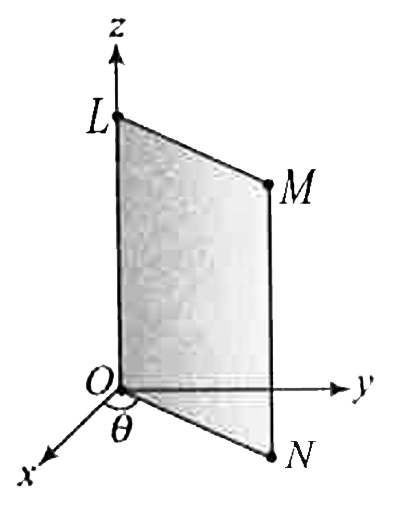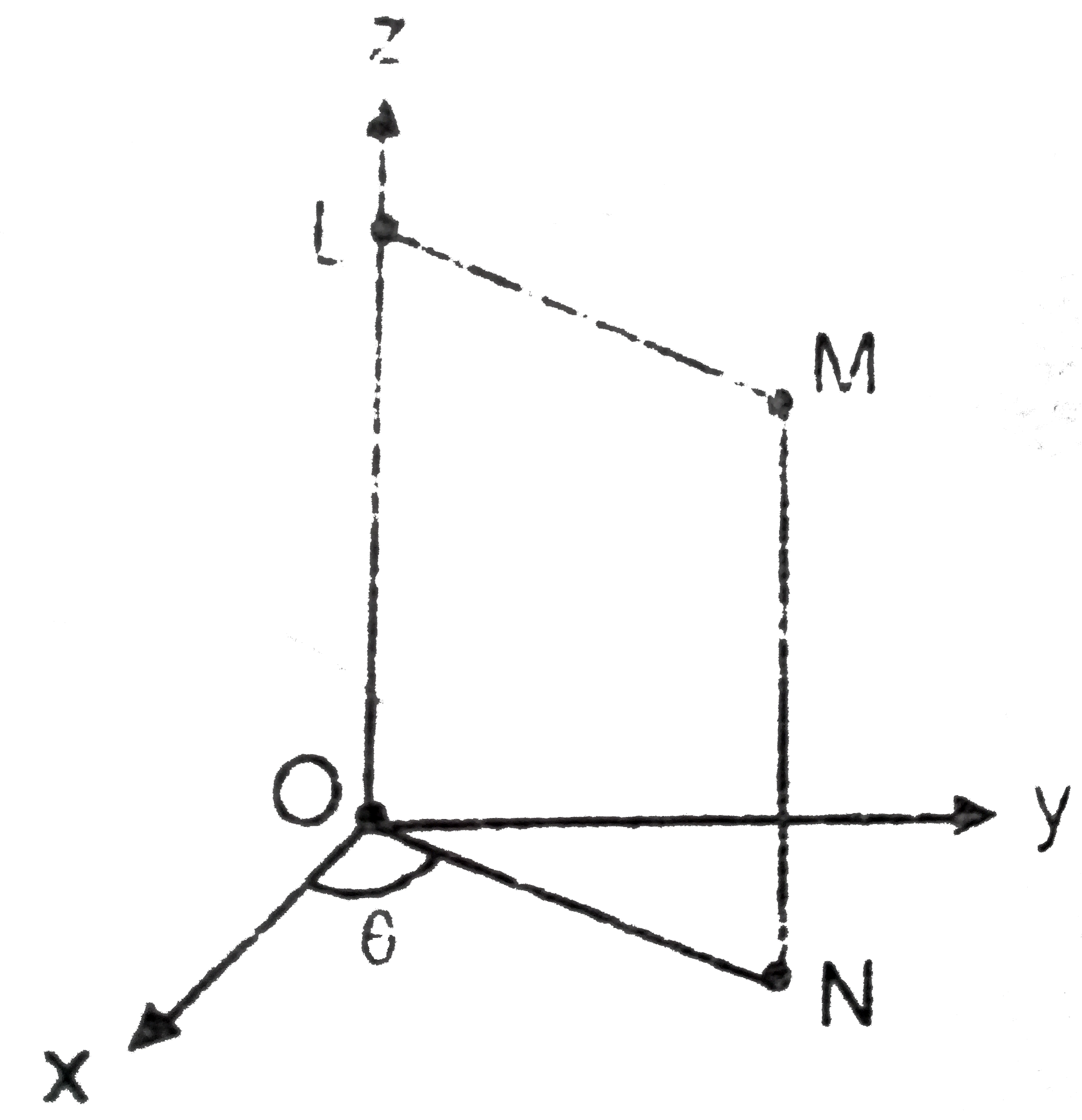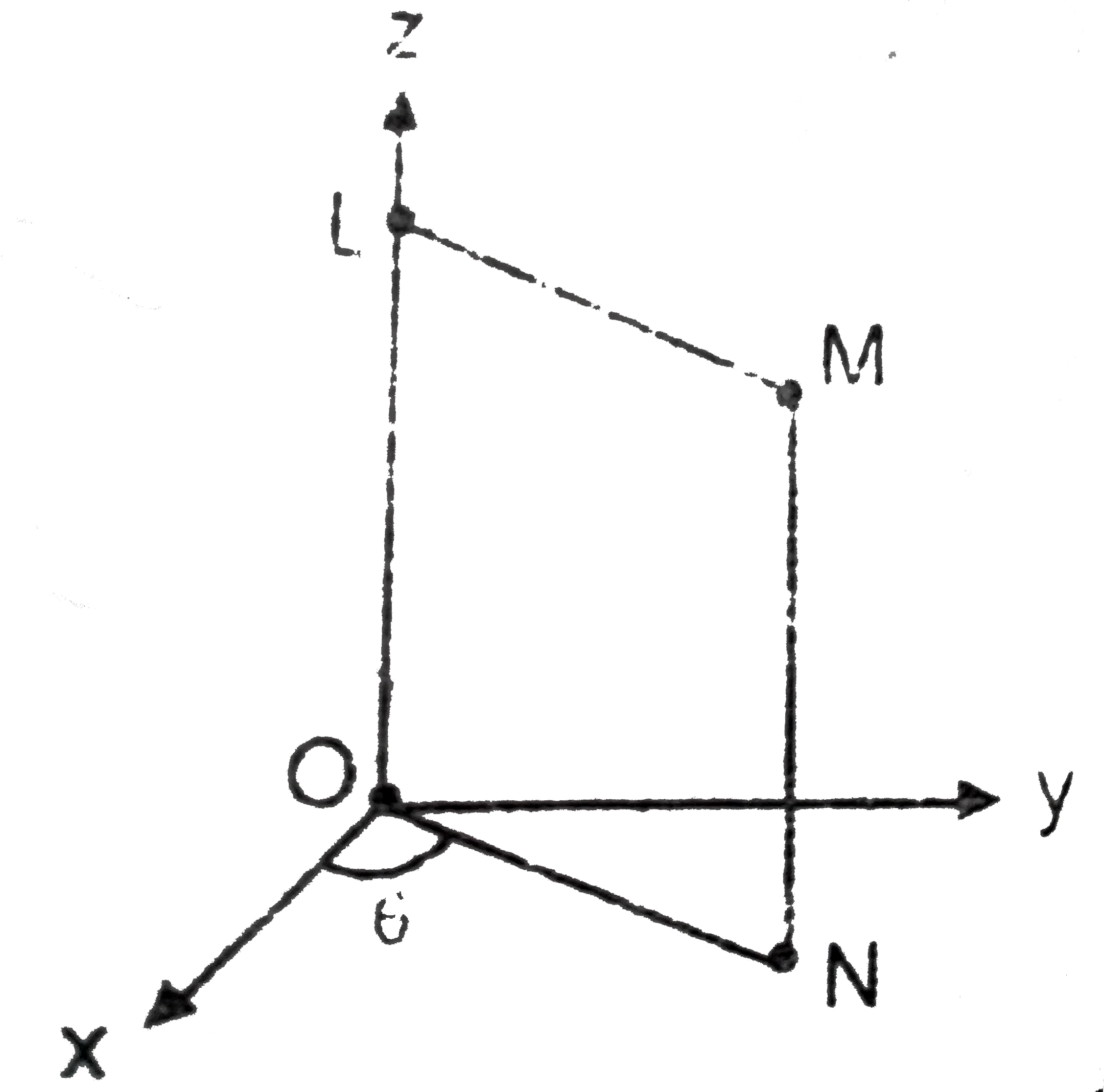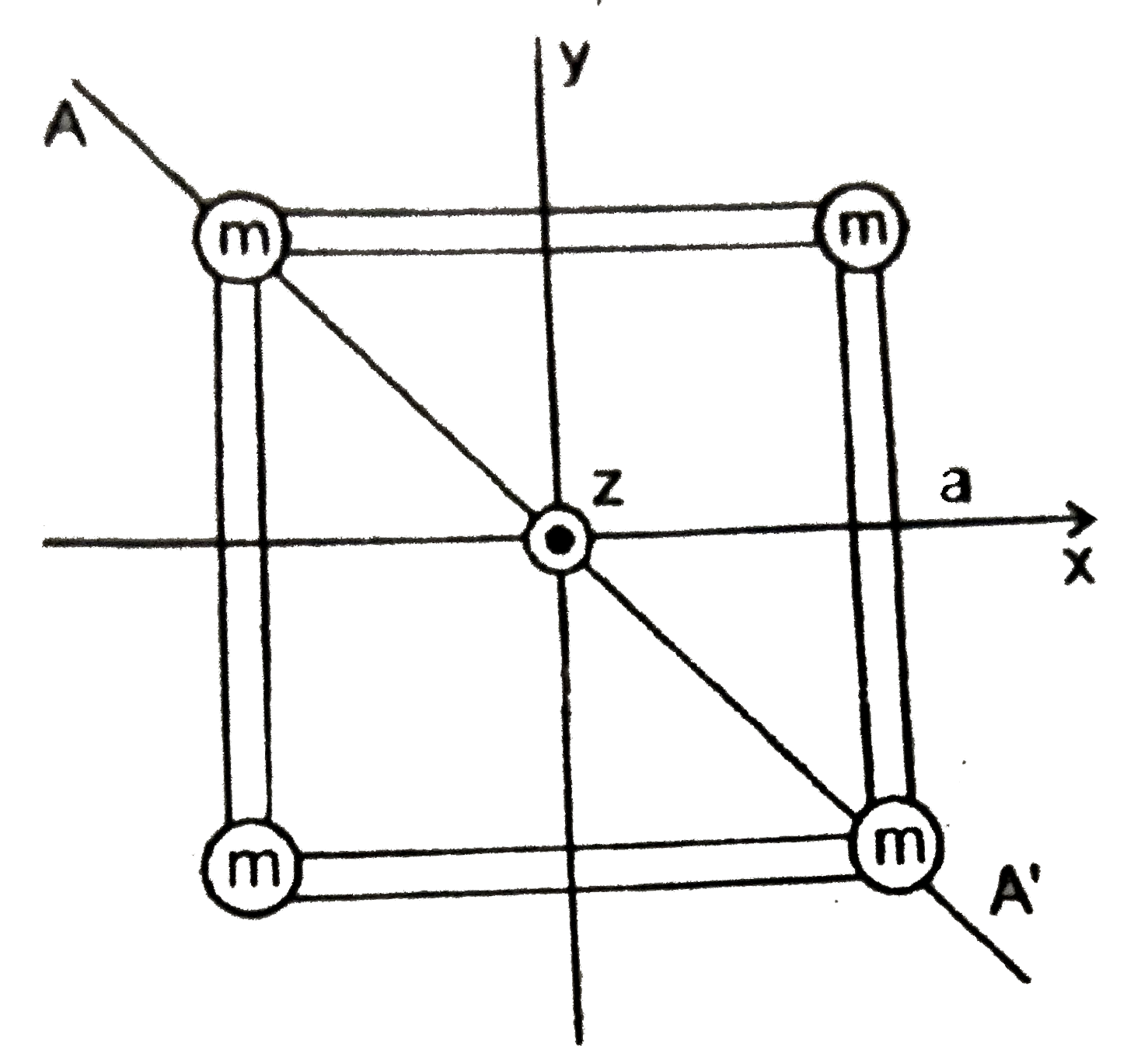the electric field intensity at all points is space is given by →E=√3ˆi−ˆj volts/meter. A square frame LMNO of side 1 meter is shown in the figure. The point N lies in x-y plane. The initial angle between line ON and x -axis is θ=60∘
The square frame LMNO is now rotated about z-axis by an angle 30∘ such that θeither increases or decreases. then pick up the correct statement .

the magnitude of electric flux increase from initial value as θ is increased.
The magnitude of electric flux increases from initial value asθ is decresad.
The magnitude of electric flux increases or decrease from initial value as θ is changed .
The magnitude of electric flux will decrease from initial value as θ is changed .
The correct Answer is:a
Step by step video, text & image solution for the electric field intensity at all points is space is given by vecE=sqrt3hati-hatj volts/meter. A square frame LMNO of side 1 meter is shown in the figure. The point N lies in x-y plane. The initial angle between line ON and x -axis is theta = 60^(@) The square frame LMNO is now rotated about z-axis by an angle 30^(@) such that thetaeither increases or decreases. then pick up the correct statement . by Physics experts to help you in doubts & scoring excellent marks in Class 12 exams.
Updated on:21/07/2023Topper's Solved these Questions
- ELECTRIC FLUX AND GAUSS LAWBOOK - CENGAGE PHYSICSCHAPTER - ELECTRIC FLUX AND GAUSS LAWEXERCISE - Subjective type
7 Videos
- ELECTRIC CURRENT AND CIRCUITBOOK - CENGAGE PHYSICSCHAPTER - ELECTRIC CURRENT AND CIRCUITEXERCISE - Interger
8 Videos
- ELECTRIC POTENTIALBOOK - CENGAGE PHYSICSCHAPTER - ELECTRIC POTENTIALEXERCISE - DPP 3.5
14 Videos
Similar Questions
Electric field intensity in a region of space is given by →E=10x2ˆiN/C. What will be potential difference between point A(2, 5) and B(-1, 10)?
View SolutionThe electric potential V at any point in space is given V=20x3 volt, where x is in meter. Calculate the electric intensity at point P (1, 0, 2).
View Solution
Knowledge Check
The electric field intensity at all points in space is given by →E=√3ˆi−ˆj volts/metre. A square frame LMNO of side 1 metre is shown in figure. The point N lies in x-y plane. The initial angle between line ON and x-axis is θ=60∘

The magnitude of electric flux through area enclosed in square frame LMNO is -A0 volt/metreB1 volt/metreC2 volt/ metreD4 volt / metreThe electric field intensity at all points in space is given by →E=√3ˆi−ˆj volts/metre. A square frame LMNO of side 1 metre is shown in figure. The point N lies in x-y plane. The initial angle between line ON and x-axis is θ=60∘

The work done by electric field in taking a point charge of 1μC from origin O to point M is -A0μJB1μJC2μJD4μjThe electric field intensity at all points in space is given by →E=√3ˆi−ˆj volts/metre. A square frame LMNO of side 1 metre is shown in figure. The point N lies in x-y plane. The initial angle between line ON and x-axis is θ=60∘

The magnitude of electric flux through area enclosed in square frame LMNO is -A0 volt metreB1 volt metreC2 volt metreD4 volt metre
The electric field intensity at all points in space is given by →E=√3ˆi−ˆj volts/metre. A square frame LMNO of side 1 metre is shown in figure. The point N lies in x-y plane. The initial angle between line ON and x-axis is θ=60∘

The work done by electric field in taking a point charge of 1μC from origin O to point M is -
View SolutionThe electric field intensity at all points in space is given by →E=√3ˆi−ˆj volts//metre. The nature of equipotential lines is x-y plane is given by
View SolutionThe electric field intensity in a region is given by →E=(−xˆi+yˆj)V/m2 where x, y are in meters. Then the pattern of line of forces in x-y plane is given by
View SolutionThe electric potential V at any point x, y, z (all in meters) in space is given by V=4x2 volts. The electric field at the point (1m, 0, 2m) is……………..V/m.
View SolutionFour point mass, each of mass m are connected at a corner of a square of side 'a', by massless rods as shown in the figure. x and y axis are in the plane of the system and z axis is perpendicualr to the plane and passing through the centre of the square.

View Solution
